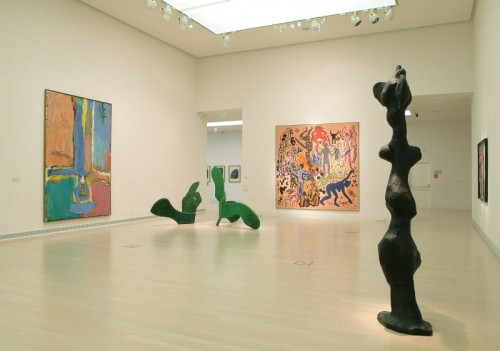Tibor Gáyor, originally an architect, has been working as an artist since the 1960s. His oeuvre focuses on a few basic problems, trying to present the structure and structural regularities of the world. The series Q 8/8 Spirale Demontage documents the central dismantling and rebuilding of a square. Gáyor spirals around the sides of the white square on a grey base, detaches a larger and larger part of the original square, and then folds the detached – but not cut – strip of canvas back onto the base at 180°. The initially static, symmetrical square shape thus becomes more and more dynamic, complex and asymmetrical, its surface apparently increasing. Around the middle of the series, the above process is apparently reversed: the shape becomes more closed and static, approaching the square again. The final element of the series is a square, a shape identical in form to the initial element. However, reconstructing the sequence of actions that created the work we see that this square is not the original square, but its reverse: in the course of the sixteen steps, a 180° turn has occurred, the plane twisting around itself. The work allows for two interpretations: on the one hand, it can be perceived as a planar, non-representational work, and on the other hand, the angles formed during the folds along with the grey base, which can also be interpreted as a background, create the illusion of depth, space and mass. These mutually exclusive, yet simultaneously present, ways of reading create a tension within the series, questioning our mechanisms and habits of reading images.
József Készman


